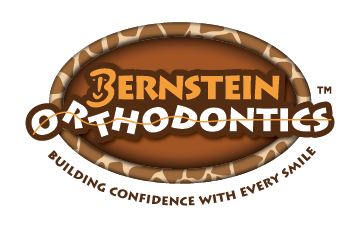All About Retainers
Keep Your Smile Straight Forever
Now that you've achieved your beautiful new smile, you need to wear your retainers to keep it that way.
Why Do I Need to Wear a Retainer?
Wearing retainers is one of the most important phases of your orthodontic treatment. Together, we have worked hard to get your teeth to their best possible position.
However, after Dr. Bernstein removes your braces, your teeth will want to return to their original positions. To prevent this from happening and to allow your teeth to adapt to their new positions, you must wear your retainers faithfully.
Types of Retainers
Dr. Bernstein will determine which type of retainer is the best and most appropriate for you.

How Long Should I Wear My Retainers?
When you get your braces off, we create retainers for you to minimize the shifting that your teeth will naturally do as they settle into their new positions. This is the time they are most prone to shifting.
We've worked hard to get here. Make sure you wear your retainers to prevent teeth from shifting back to their original positions! Retainers are forever. Wear them as directed every single day!
As the years pass, you may wear them less and less but never ever throw them away. You only have to wear your retainers as long as you want to keep your teeth straight.
We include a certain period of retainer check-ups after your treatment. Please bring your retainers to every appointment.
Minor tooth movement occurs in every mouth throughout life, whether or not that person has had orthodontic treatment. The goal of wearing a retainer after braces is to minimize shifting.
Phase 1 Retainers
For Phase I patients, it's essential to wear your retainers every single day as directed. The goal of Phase I retainers is to help hold your teeth in place so that new ones can grow in as easily as possible.
The front teeth may shift as this happens and that's okay. These types of retainers are temporary. You'll eventually outgrow them as you lose more baby teeth, more adult teeth come in, and your jaw grows.
Don't' stop wearing your retainers until we tell you it is time to do so. The retainers may seem tight from time to time when baby or primary teeth get loose. Please ensure you wiggle those teeth out promptly so that the retainers can fit better.
Retainer Care
When you remove your retainers in the morning, please brush them carefully with your toothbrush, toothpaste or soap as directed to remove all the plaque. If plaque deposits build up on your retainer, Efferdent makes a retainer cleaner available in most stores.
Please put the retainers in the case provided (there is no need to keep them moist). Please do not put the retainers or retainer case in direct sunlight or in boiling water to clean them.
If you have a dog, take every precaution to keep the retainers away from your dog (even when they're in their case). Dogs love the smell and will seek them out and chew them to pieces.
If these retainers are damaged or lost, you'll need to pay to replace them.
If your retainers do not fit correctly or you can't wear them, please call the office immediately. Not wearing your retainer for even a short time may require a new retainer or possibly braces again at an additional cost.
Retainer Visits
The short appointments needed to check your retainers and your teeth in the future are essential.
Please bring your retainers to all of these appointments.
Be sure to visit your dentist soon for a check-up.
How to Keep Your Bernstein Smile for Years To Come
Phase 1 Retention
Congratulations! You've worked so hard, and it's time to take a break from braces!
Now that your first phase of treatment is over and your teeth are in a good position for your permanent teeth to emerge, you can eat all the hard, crunchy, and sticky foods you've been missing.
Learn MoreKeep Your Smile For a Lifetime
Your orthodontic treatment goal has been to accomplish the greatest possible improvement to your teeth permitted by your heredity and dental environment. There is no such thing as a perfect set of teeth.
Minor tooth movement occurs in every mouth throughout life, whether there has been prior orthodontic treatment. The most common area for change is in the lower front teeth. These changes are normal and may be greatly reduced or even eliminated by wearing your retainer on a long term basis.
Remember, wear them in your mouth, not in your pocket. Retainers work when you follow our instructions.
